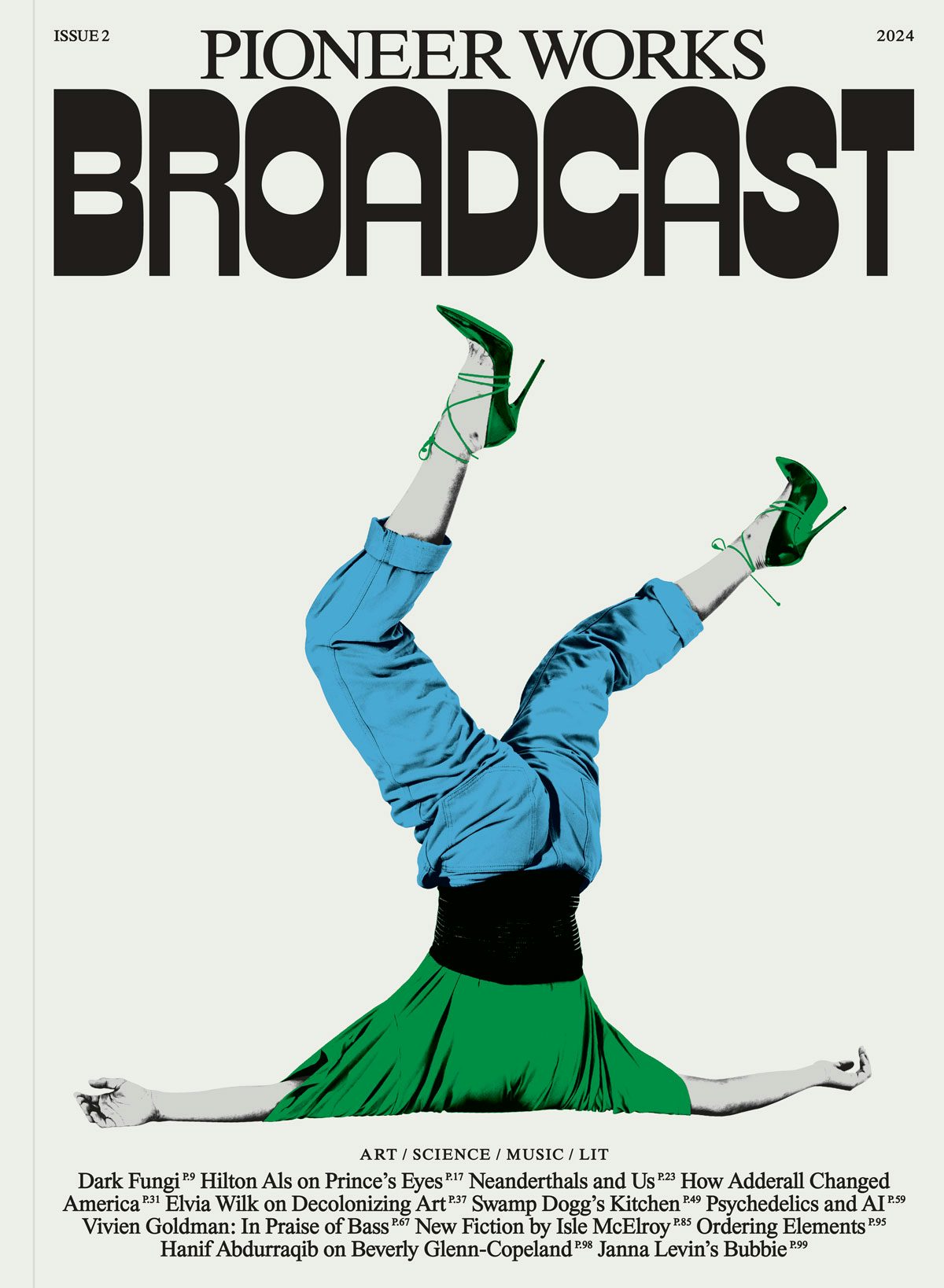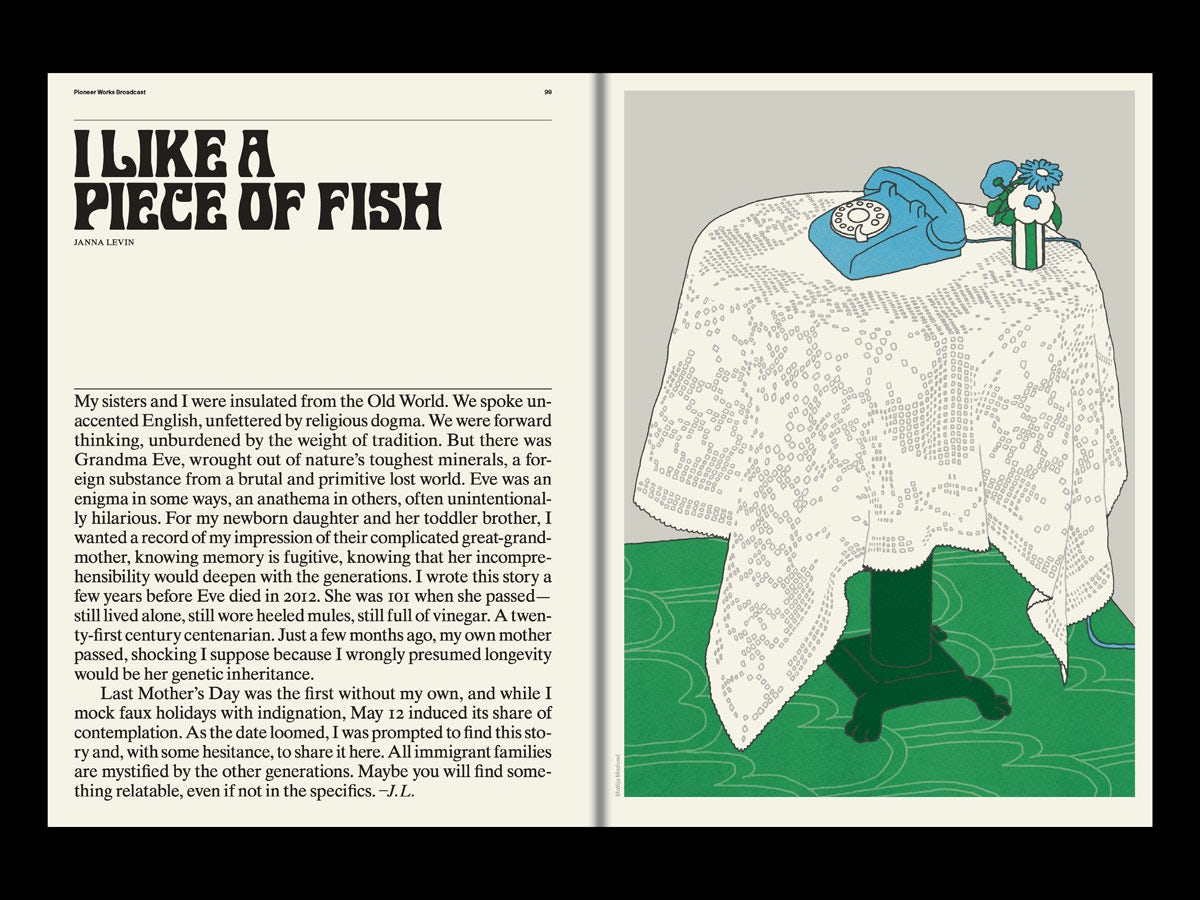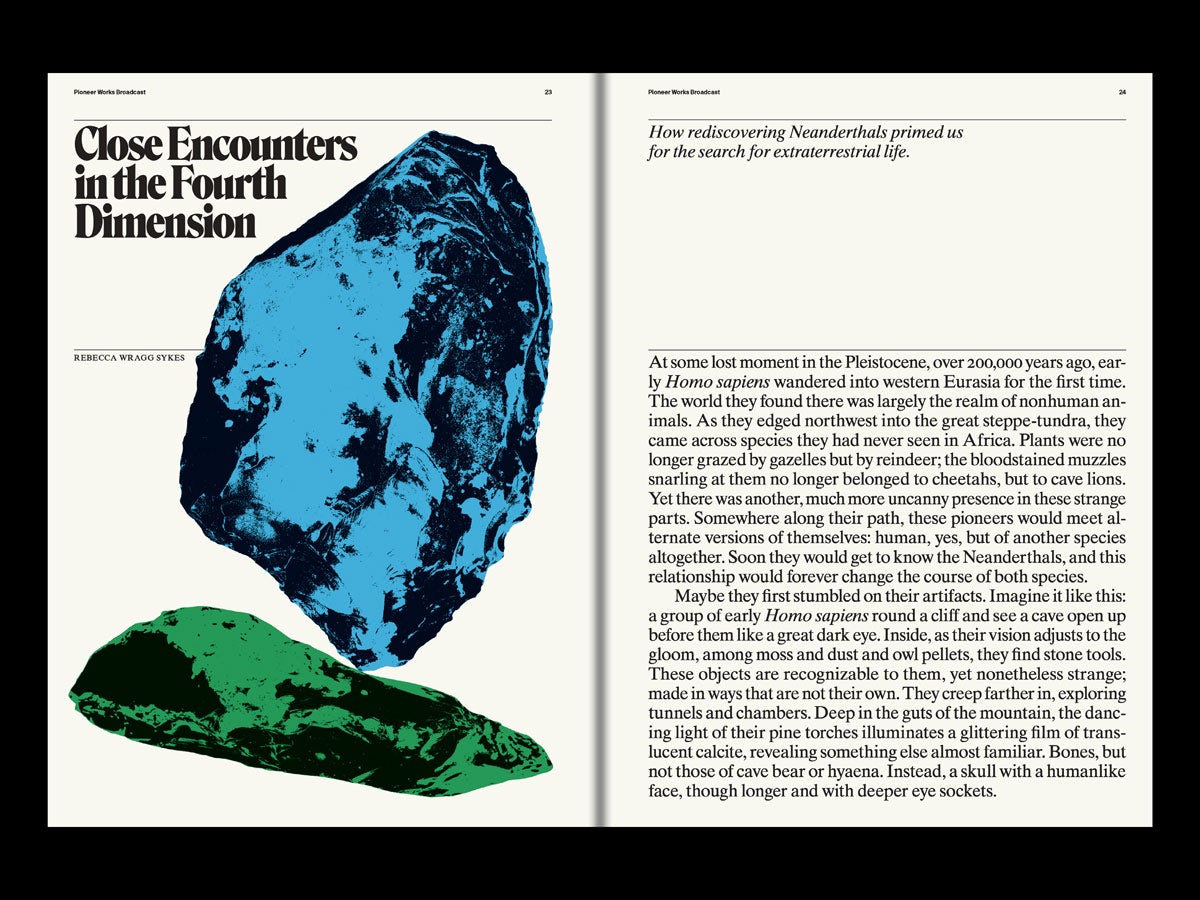Good Reads: Broadcast blends the worlds of art and science
Born out of Brooklyn-based Pioneer Works, the magazine seeks to translate the cultural centre’s experimental approach to the printed page
Founded by artist Dustin Yellin in 2012 as a place where artists, scientists and thinkers from various backgrounds could converge and work together in real-time, Pioneer Works is a non-profit cultural centre housed in a former Iron Works factory in Red Hook.
Inspired by utopian visionaries such as Buckminster Fuller and radical institutions like Black Mountain College, it counts everyone from David Byrne to Princess Eugenie among its advisory board. Its work has also extended beyond its walls, firstly as a virtual publication and now in physical form as Broadcast magazine.
Unsurprisingly, Broadcast’s subject matter is sprawling, with its latest issue featuring explorations of ‘dark fungi’, sex with Neanderthals and an examination of how Adderall changed America. Here, we speak to founding managing director Michael Jones about bringing the magazine to life.

Creative Review: How did the idea to make a physical magazine come about?
Michael Jones: We launched Broadcast as a digital extension of Pioneer Works’ physical campus. But from the start, Broadcast hasn’t felt as unphysical as we originally imagined it to be; it has insisted on feeling like a thing. Pioneer Works has a long history of publishing through its imprint, Pioneer Works Press, so a print issue always seemed like the natural next step. We love the platform the internet furnishes for what we do, and who it lets us reach, but we also believe in the unique magic of words on paper, and in the singular pleasure offered when people hold ideas in their hands.
CR: How has the magazine evolved from issue one to two?
MJ: Issue one was an experiment to see how the experience of Broadcast would translate from web to print. The intention was to create something that felt like more than a zine, but less than a traditional magazine. The response from our audience was overwhelmingly positive, and it was clear that there was much appetite for what we’d endeavoured to create — a beautiful object celebrating prose as much as design. Since then, much of the design identity has remained the same, though the project has become more ambitious. Issue two is roughly 75 pages longer, with an improved paper quality, and new dimensions to enhance the reading experience.

CR: What’s your approach to the editorial direction?
MJ: Broadcast editors-in-chief Janna Levin and Joshua Jelly-Schapiro are scholars, authors, and public intellectuals, deeply passionate about the written word’s role in contemporary culture. They’re also educators, committed to a spirit of intellectual generosity. Their respective backgrounds animate the magazine’s editorial direction.
A Guggenheim Fellow, Levin has greatly contributed to an understanding of black holes and cosmology. Jelly-Schapiro, meanwhile, is a geographer, writer, and professor at New York University, and the author of many books of creative non-fiction. On our site, and within the pages of our two print issues, you’ll find dispatches from the Adderall epidemic alongside scientific reports on animal vision and land-back efforts.

CR: What inspired the design and art direction?
MJ: Design for the magazine was led by the organisation’s in-house design director, Daniel Kent, who worked with a team of developers and programmers to translate his ideas to a digital environment. To do this, our designers found, licensed, and organised over 70 unique font files from individual designers, independent foundries, and other sources. Some of these fonts date from a century ago, while others are new.
The print issue utilises the same unique font library as our website, along with bespoke design assets and striking photography and illustrations. Printed on off-white paper that mimics the background of our pieces online, the issue also utilises a three-colour palette (two colours plus black) to evoke the look and feel of screenprint and risograph printing of yore — but with a quality of production, and attention to detail, to rival printed publications of the present.
CR: What are your future plans for Broadcast?
MJ: Our goal is to expand Broadcast as a leading, influential publication, across all media. We expect it to flourish as a beacon for a global community united through the transcendent power of art and science. And while the ambition might sound overly earnest, we are spurred on by the belief that scientific knowledge conjoined to the power of culture and the arts are the lifelines needed to address society’s greatest challenges.

Broadcast Issue Two is available to pre-order now; store.pioneerworks.org










